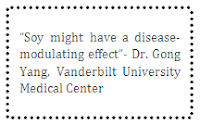As the Holidays are
approaching quickly, full of family, friends, and delicious goodies readily
available- here are a few thing to keep in mind before grabbing for that 3rd piece
of fruit cake!
Did you know?
The average person gains 7 lbs between Thanksgiving and New Years
1. Do Not Stop Exercising. We all need at least 1 hour of exercise 5x a
week to maintain our weight. Plan a group exercise event before eating the
big Thanksgiving dinner such as snowshoeing, skiing, or hiking etc.
2. When Drinking Alcohol,
Do So in Moderation. Wine contains fewer
calories than beer.
Limit your alcohol
intake to no more than 2 drinks 2-3x a week. Alcohol contains empty
calories
and a lot of sugar which
can cause inflammation and has been associated with an increase risk of
breast cancer.
3. Watch Your Portion Sizes. Appetizers may not ber very filling and can
contain a lot
of calories, especially
if they are creamy. Healthy appetizers can include goat cheese and
rice crackers, olives,
hummus, pates, baked corn ships with salsa and guacamole, veggies with
a yogurt based dip,
baked kale chips, veggie chips etc. Be careful with your cheese and nut
intake since these foods
tend to have a lot of calories.
4. Drink at Least 8-10
Glasses of Water a Day to Stay Hydrated. Dehydration can cause fatigue, headaches, dizziness,
and can cause us to eat more.
5. Bake Healthy
Desserts by putting one fourth
the amount of sugar in the recipe or
substituting a natural
sweetener such as agave, stevia, honey, apple juice, or 100% maple syrup.
6. Eat in a Relaxed
Atmosphere and Chew Your Food Thoroughly. When under
stress many people eat
quickly without even realizing what their eating thus do not get full.
Each bite should be
chewed twenty times for proper absorption and digestion.
7. If You Splurge One Night Then the Next Day Exercise and Eat a Little Less such
as soups and salads.
Veggies tend to be low in calories, for soups stick with chicken and
veggies, chili’s or
other vegetable soups. Creamy soups and salad dressing are loaded with
calories.
8. Create a Healthy
Thanksgiving Theme etc. Healthy
should not be boring. Have
your guests bring a
healthy appetizer, main dish or dessert.
9. Use Fresh Spices for Flavorings instead of heavy
cream sauces.
10. Try to Relax and Not Get Too Stressed. People tend to
eat more in stressful situations. So remember to breathe.
MAY YOUR HOLIDAYS BE MERRY
AND YOUR BODIES HEALTHY





















